Did you know that oyster mushrooms are one of the most widely consumed mushrooms in the world? Well, it’s true! These delicious fungi are popular for their mild, slightly earthy flavor and smooth texture when cooked. Whether you’re a fan of mushrooms or just a curious foodie, learning about the cultivation, benefits, and recipes of oyster mushrooms is a must.
Key Takeaways:
- Oyster mushrooms are highly popular and widely consumed mushrooms due to their mild flavor and smooth texture.
- They can be easily grown at home or purchased from supermarkets year-round.
- Oyster mushrooms offer various nutritional benefits and contain high levels of protein, potassium, magnesium, and folate, as well as antioxidants.
- There are different varieties of oyster mushrooms, such as pearl oyster, blue oyster, golden oyster, pink oyster, phoenix oyster, and king oyster, each with its own unique characteristics.
- Whether you’re a beginner or an experienced cook, oyster mushrooms can be incorporated into a wide range of dishes, adding flavor and versatility to your meals.
What Are Oyster Mushrooms?
Oyster mushrooms are a type of edible fungi that get their name from their oyster-shaped cap and short or absent stem. They are typically grey or greyish-brown in color, but can also come in yellow and pink varieties. Oyster mushrooms are one of the easiest mushrooms to grow due to their fast growth, wide variety of potential substrates, and tolerance to growing conditions.
Oyster mushrooms have a distinctive appearance with their wide, fan-shaped caps that resemble oysters, hence their name. They can be found growing on logs, fallen trees, or even in commercial mushroom farms. Their fast growth and ability to thrive on a wide variety of substrates make them a popular choice for both home growers and commercial farmers.
What sets oyster mushrooms apart from other edible fungi is their tolerance to growing conditions. They can be grown in both indoor and outdoor environments, and they are known for their ability to adapt to different factors such as temperature, humidity, and light levels. This versatility makes oyster mushrooms a reliable crop for mushroom enthusiasts and farmers alike.
Whether you’re a beginner or an experienced grower, oyster mushrooms offer a rewarding and accessible way to cultivate your own fungi. With their delicious taste, nutritional benefits, and forgiving growth requirements, oyster mushrooms are a fantastic addition to any kitchen or garden.
What Do Oyster Mushrooms Taste Like?
When it comes to flavor, oyster mushrooms are a delight for the taste buds. When cooked, they have a smooth texture that adds a satisfying bite to any dish. Many people describe oyster mushrooms as having a mild flavor with subtle hints of seafood and an earthy note. Some even detect a slight anise flavor, reminiscent of licorice.
However, it’s important to note that these flavors are quite mild and often indiscernible once the mushrooms are incorporated into a dish. Instead, oyster mushrooms act as a versatile canvas, seamlessly blending with other ingredients to enhance the overall taste profile.
Whether you’re tossing them in a stir-fry, adding them to a pasta dish, or grilling them as a meaty alternative, oyster mushrooms bring their own unique essence to the table. Their mild flavor allows them to complement a wide range of ingredients, making them a favorite among chefs and home cooks alike.
Smooth Texture and Seafood Flavor
The smooth texture of oyster mushrooms is one of their standout features. Unlike other mushrooms that can be chewy or fibrous, oyster mushrooms have a velvety consistency that adds a satisfying mouthfeel to every bite. This smoothness pairs perfectly with their subtle seafood flavor, creating a harmonious combination that appeals to seafood enthusiasts.
“Oyster mushrooms have a unique ability to mimic the texture and taste of certain types of seafood, making them an excellent choice for vegetarian and vegan dishes that call for a seafood twist.”
Mild Flavor with an Earthy Note
Oyster mushrooms also possess a distinct earthy note that adds depth and richness to dishes. This earthiness pairs well with various ingredients, allowing oyster mushrooms to blend seamlessly into soups, stews, and sauces. Their mild flavor ensures that they don’t overpower other ingredients, creating a balanced and harmonious culinary experience.
Overall, whether you’re a fan of seafood or simply appreciate mushrooms with a smooth texture and mild flavor, oyster mushrooms are a versatile and delicious addition to any culinary repertoire.
| Flavor Profile | Texture |
|---|---|
| Smooth | Slight seafood flavor |
| Mild with an earthy note | Velvety and satisfying |
When Are Oyster Mushrooms In Season?
Oyster mushrooms can be found in the wild during the fall season, particularly after the first frost of the year or after other significant weather changes. This is when they thrive in the natural environment and can be foraged by mushroom enthusiasts. The changing temperatures and moisture levels create the perfect conditions for wild oyster mushrooms to flourish.
However, for those who prefer the convenience of purchasing oyster mushrooms from the supermarket, there is good news. Commercial growers cultivate oyster mushrooms all year round, ensuring a steady supply of this delicious fungi. Thanks to modern cultivation techniques and controlled indoor environments, oyster mushrooms are available in supermarkets regardless of the season.
Unlike some other mushrooms that have specific seasons in which they grow best, oyster mushrooms are not restricted by any particular time of the year. Their adaptability allows commercial growers to provide consumers with fresh oyster mushrooms whenever they desire, making them a reliable ingredient for culinary exploration throughout the year.
To illustrate the availability of oyster mushrooms all year round, take a look at the table below:
| Season | Availability |
|---|---|
| Spring | Available |
| Summer | Available |
| Fall | Available |
| Winter | Available |
Note: The availability of oyster mushrooms may vary slightly depending on the specific region and sourcing practices of individual supermarkets.
Whether you’re enjoying the wild harvest in the fall or picking up a fresh batch at the supermarket any time of the year, oyster mushrooms are a versatile ingredient that can elevate your culinary creations. Their year-round availability allows you to explore and experiment with this delicious mushroom in a variety of dishes, from sautés and stir-fries to soups and pasta dishes.
Where Can I Find Wild Oyster Mushrooms?
If you’re an adventurous mushroom forager like me, you may be wondering where you can find wild oyster mushrooms. Well, you’re in luck! Oyster mushrooms can be found in various locations in the wild, and I’m here to help you uncover their hidden spots.
One of the best places to search for wild oyster mushrooms is near fallen logs, fallen trees, or even dead standing trees. These fallen giants create the perfect environment for oyster mushrooms to thrive. Keep an eye out for clusters of oyster mushrooms growing on or near these natural structures. They often form beautiful formations that are a delight to discover in the forest.
Oyster mushrooms have a preference for shade, so your best bet is to search in areas with ample tree cover. Look for old, leafy, open forests that provide the necessary shade for oyster mushrooms to flourish. Oak trees and beech trees are particularly favored by these delicious fungi, so make sure to explore areas where these trees are prevalent.
Tips for Mushroom Foraging
When searching for wild oyster mushrooms, it’s important to keep a few things in mind:
- Always respect the environment and follow foraging regulations in your area.
- Bring a field guide or consult with an experienced forager to help you identify edible mushrooms correctly.
- Avoid picking mushrooms that are past their prime or appear old and decaying.
- Be cautious of poisonous lookalikes and educate yourself on the key differences between oyster mushrooms and their impostors.
- Remember to harvest oyster mushrooms while they are young and tender for the best flavor and texture.
So, put on your walking shoes and venture into the captivating world of wild oyster mushrooms. Explore the hidden treasures that fallen trees and shady forests have to offer. Who knows, you might stumble upon a bountiful cluster of oyster mushrooms on your next adventure!
Different Types of Oyster Mushrooms
When it comes to oyster mushrooms, there is a diverse range of varieties to explore. Each type of oyster mushroom has its own unique characteristics and flavors, adding versatility to your culinary adventures.
Pearl Oyster
The pearl oyster mushroom is the most common variety. It features a slightly sweet and woodsy taste, making it a delicious addition to stir-fries and pasta dishes.
Blue Oyster
The blue oyster mushroom has a distinct grey color with a subtle blueish hue. Its flavor is identical to the pearl oyster, making it perfect for any recipe that calls for oyster mushrooms.
Golden Oyster
The golden oyster mushroom stands out with its vibrant yellow color. It offers a more complex and aromatic flavor profile, bringing a delightful twist to sautés and risottos.
Pink Oyster
With its bright pink color, the pink oyster mushroom adds a pop of vibrancy to your dishes. It has a more woody and tough texture, making it ideal for soups and stews.
Phoenix Oyster
Similar in appearance and taste to the pearl oyster, the phoenix oyster mushroom is a reliable choice for various recipes. Its versatility shines in creamy pastas and hearty omelets.
King Oyster
The king oyster mushroom is the largest of all oyster mushrooms. It boasts thick, meaty stems and tan-colored caps. Its robust texture and rich flavor make it a fantastic addition to grilled dishes and roasted vegetables.
Exploring the different types of oyster mushrooms allows you to bring a range of flavors and textures to your cooking. Whether you prefer the mild and sweet notes of the pearl oyster or the robust meatiness of the king oyster, each variety offers unique culinary experiences.
How To Identify Oyster Mushrooms
Oyster mushrooms are distinctive and can be easily identified by their unique characteristics:
- Oyster-Shaped Cap: Oyster mushrooms have caps that resemble the shape of an oyster shell, with a convex top and a slightly wavy edge.
- Gills: Look underneath the cap to find the gills. Oyster mushrooms have decurrent gills, which means they run down the length of the stem.
- Stem: Oyster mushrooms have short or absent stems, making them appear as if the cap is directly attached to the growing surface.
- Spore Print: To identify oyster mushrooms, take a spore print. Place a mature mushroom cap on a piece of white paper overnight. In the morning, lift the cap to reveal a white spore print, which helps distinguish them from other fungi.
- Habitat: Oyster mushrooms are typically found growing in clusters or shelf-like formations on logs or dead standing trees. They thrive in damp and shady environments.
- Smell: Some people describe the smell of oyster mushrooms as similar to black licorice or anise. However, the smell is usually subtle and not always easily detectable.
By paying attention to these characteristics, you’ll be able to confidently identify oyster mushrooms and enjoy their unique flavor and texture.
Oyster Mushroom Lookalikes
While oyster mushrooms are a popular and delicious choice for culinary endeavors, it is important to be aware of their lookalikes. Several mushrooms bear a resemblance to oyster mushrooms, but not all of them are safe to eat. Here are some common oyster mushroom lookalikes:
1. Elm Oyster
The elm oyster (Hypsizygus ulmarius) is often mistaken for oyster mushrooms due to their similar appearance. Elm oysters have a light tan to white color and a similar shape as oyster mushrooms. However, the key difference lies in the gills. While oyster mushrooms have white to pale gray decurrent gills, elm oysters have white, smooth, and non-decurrent gills.
2. Omphalotus nidiformis (Ghost Fungus)
The Omphalotus nidiformis, commonly known as ghost fungus, bears a striking resemblance to oyster mushrooms. They both have a similar color and shape. However, ghost fungus is highly toxic and should never be consumed. It is crucial to take extra caution while foraging for wild mushrooms and be aware of the distinct differences between the two.
3. Omphalotus olearius (Jack-o’-Lantern Mushroom)
The Omphalotus olearius, also known as the jack-o’-lantern mushroom, is another toxic lookalike of oyster mushrooms. Jack-o’-lantern mushrooms have orange to bright yellow caps and gills. Unlike oyster mushrooms, their gills are not decurrent. It’s important to avoid mistaking them for oyster mushrooms as ingesting jack-o’-lantern mushrooms can cause severe gastrointestinal distress.
4. Clitocybe dealbata (Ivory Funnel)
The Clitocybe dealbata, commonly referred to as the ivory funnel, is another mushroom that can be mistaken for oyster mushrooms. Ivory funnel mushrooms have a pale gray to off-white color, similar to some varieties of oyster mushrooms. However, they have crowded gills and a distinctive funnel-shaped cap. It’s important to note that ivory funnel mushrooms are poisonous and should not be consumed.
It’s crucial to exercise caution when identifying mushrooms, especially when foraging in the wild. If you are unsure about the identification of a mushroom, it is best to consult an expert or leave it be. Remember, only trust reliable sources and experts when it comes to mushroom identification.
| Lookalike | Distinctive Features | Safety |
|---|---|---|
| Elm Oyster | White, smooth gills | Edible |
| Omphalotus nidiformis (Ghost Fungus) | Toxic and bioluminescent | Highly toxic, not edible |
| Omphalotus olearius (Jack-o’-Lantern Mushroom) | Orange to bright yellow caps and decurrent gills | Highly toxic, not edible |
| Clitocybe dealbata (Ivory Funnel) | Pale gray to off-white color with funnel-shaped cap | Highly toxic, not edible |
How to Choose and Store Oyster Mushrooms
When it comes to selecting the perfect oyster mushrooms for your culinary endeavors, there are a few key factors to consider. By following these guidelines, you can ensure that you are choosing the best oyster mushrooms for maximum flavor and freshness.
Firstly, look for mushrooms that are arranged in tight clusters. These clusters indicate that the mushrooms were grown in a controlled, optimal environment, resulting in uniform growth and consistent quality. Avoid loose and scattered mushrooms, as they may be from different batches or have inconsistent growing conditions.
Inspect the mushrooms for any signs of wilting or dark spots. These can be indications that the mushrooms are starting to spoil and are no longer fresh. Fresh oyster mushrooms should have a firm, springy texture and a bright color. The cap of the mushroom should be smooth and intact, without any signs of damage or discoloration.
Here are some key tips to keep in mind when choosing oyster mushrooms:
- Look for tight clusters of mushrooms
- Avoid mushrooms with signs of wilting or dark spots
- Ensure the mushrooms have a fresh texture and bright color
Once you have selected your oyster mushrooms, it is crucial to store them properly to maintain their freshness and flavor. Oyster mushrooms are delicate and can be prone to drying out quickly.
An effective way to store oyster mushrooms is to place them in a plastic bag or on a plate lined with a dry paper towel. This helps to prevent excessive moisture that can lead to the growth of mold. Additionally, it is important to keep the mushrooms refrigerated to slow down the rate of deterioration.
Here is a simple guide for storing oyster mushrooms:
- Place the mushrooms in a plastic bag or on a plate
- Line the plate or bag with a dry paper towel
- Store the mushrooms in the refrigerator
By following these measures, you can ensure that your oyster mushrooms stay fresh for a longer period, allowing you to enjoy their delightful flavor and texture in your recipes.
Conclusion
Oyster mushrooms are a versatile and delicious addition to any meal. With their mild, slightly earthy flavor and smooth texture when cooked, they can be used in a wide range of dishes. Whether you choose to grow oyster mushrooms at home or purchase them from the supermarket, you’ll enjoy their unique taste and culinary potential.
In addition to being tasty, oyster mushrooms are also nutritious. They are a good source of protein, potassium, magnesium, and folate, providing essential nutrients for a balanced diet. Furthermore, oyster mushrooms contain antioxidants that contribute to overall health and well-being.
With their various colors and different taste profiles, oyster mushrooms can be a fun and creative ingredient in your cooking. From stir-fries to soups, pasta dishes to grilled meals, oyster mushrooms add depth and flavor to a variety of recipes. Their versatility makes them a go-to choice for both home cooks and professional chefs.
So whether you’re a seasoned mushroom enthusiast or new to the world of fungi, give oyster mushrooms a try. Enjoy their delicious taste, reap the nutritional benefits, and elevate your meals with this versatile and delightful mushroom variety.


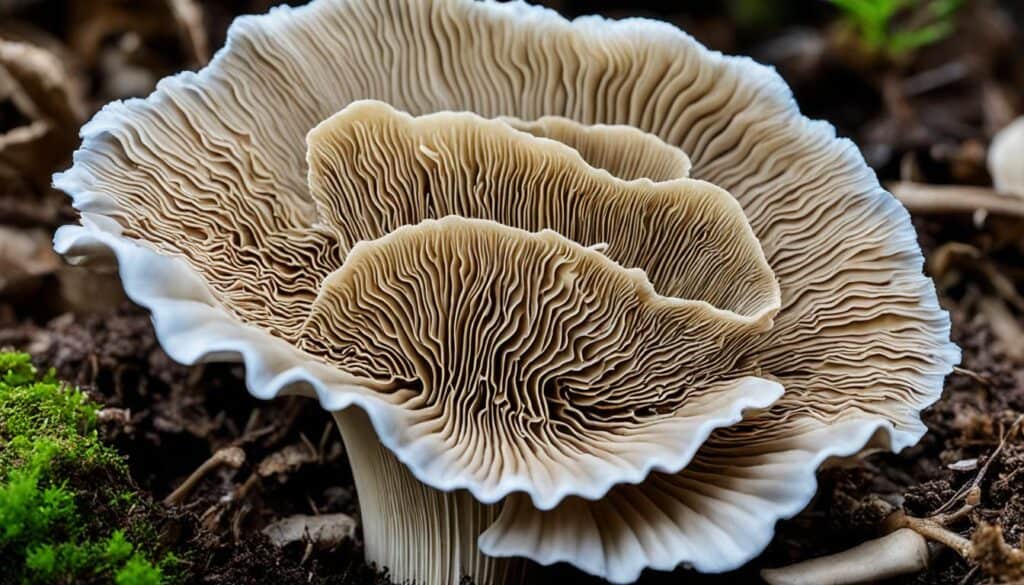
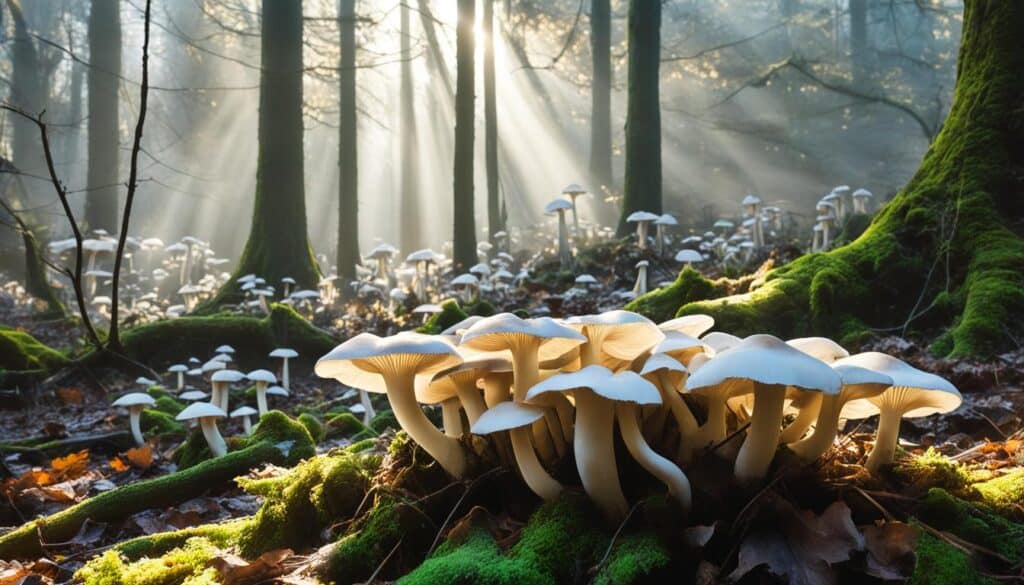
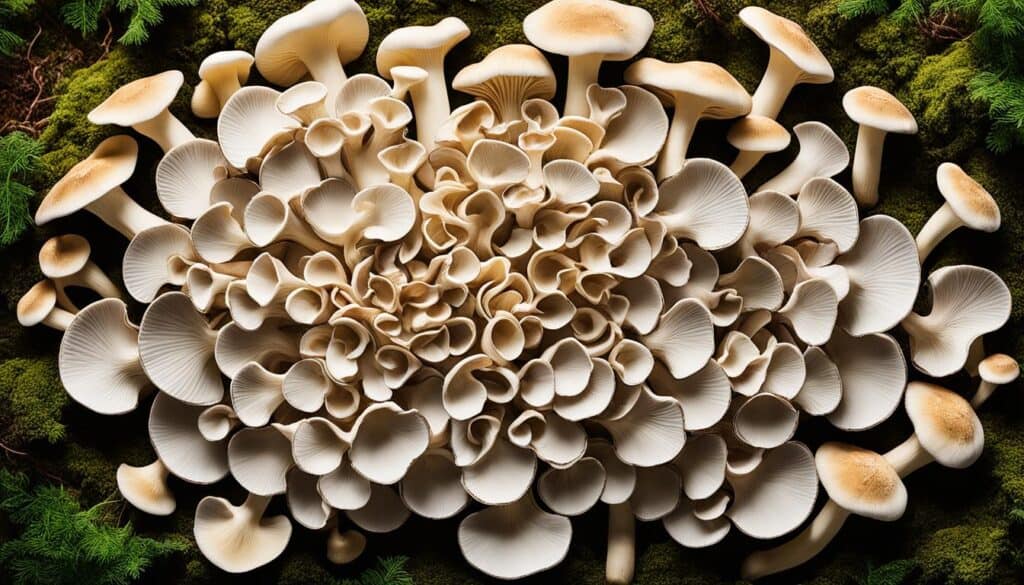
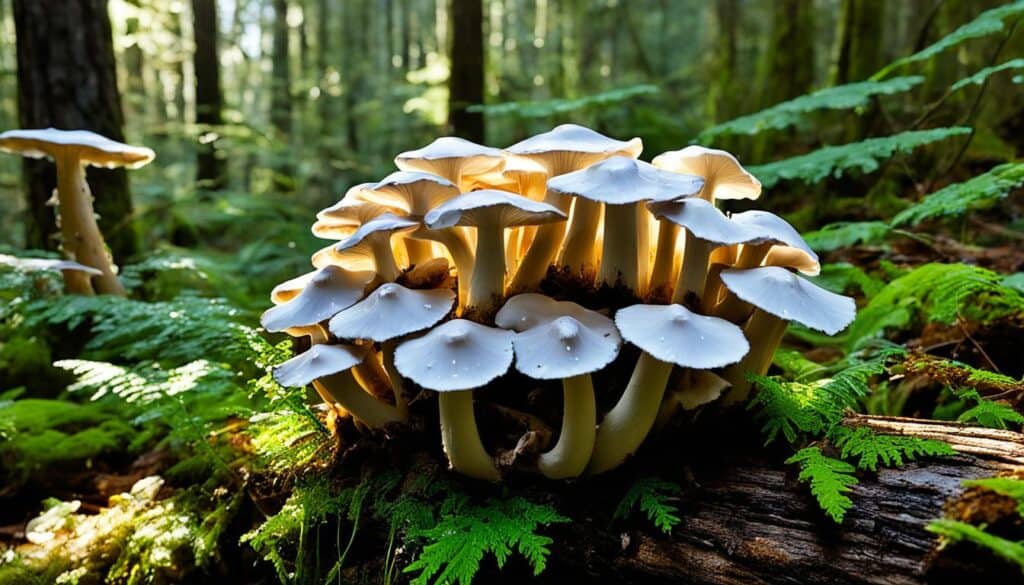
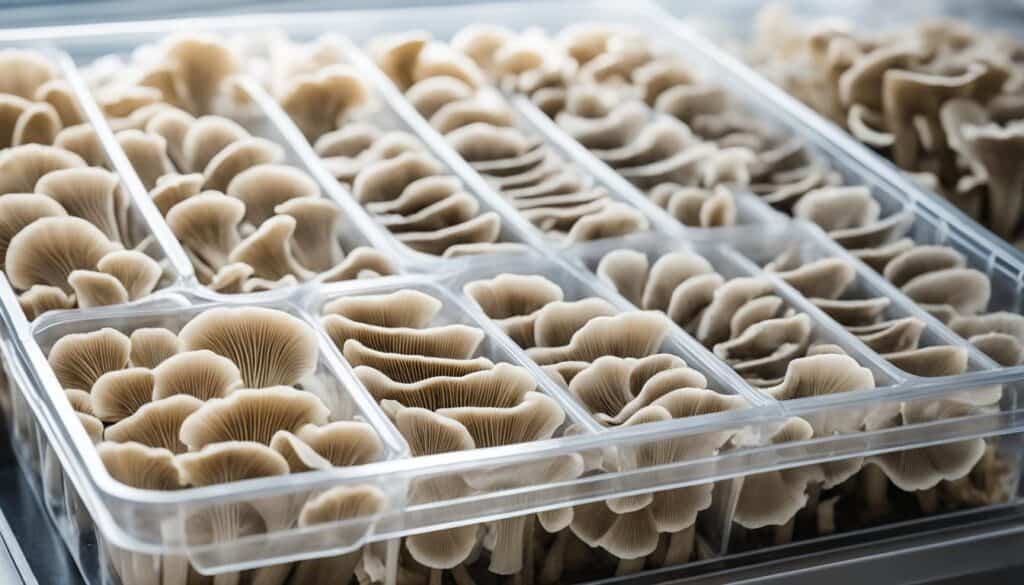



Leave a Reply